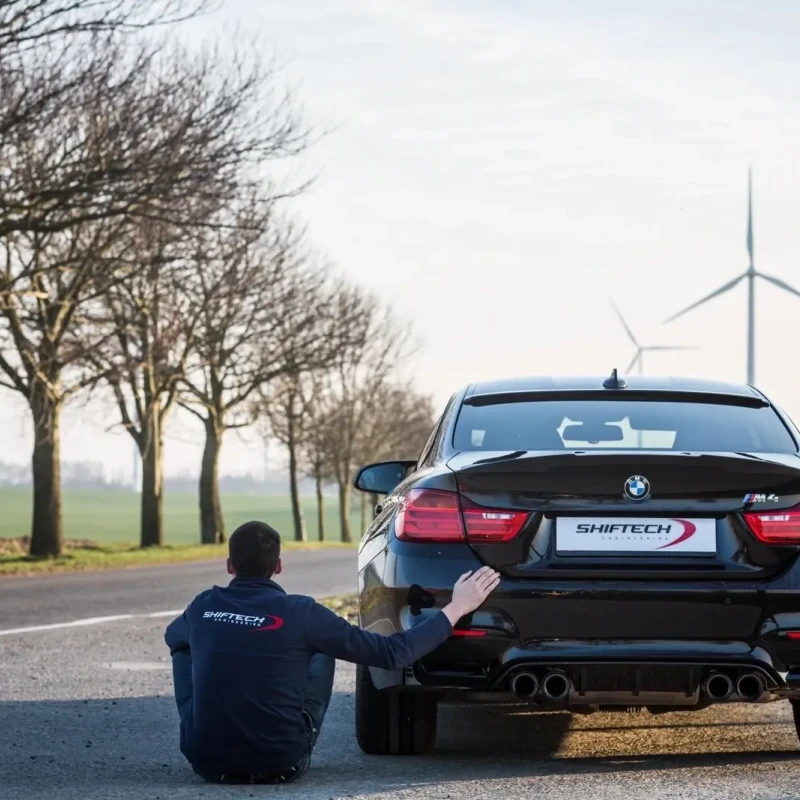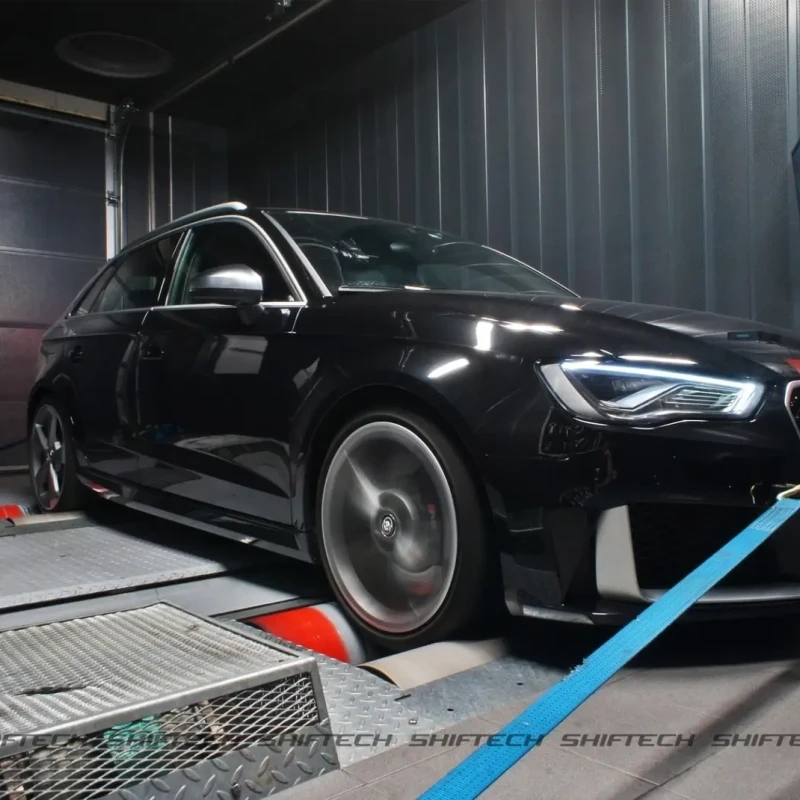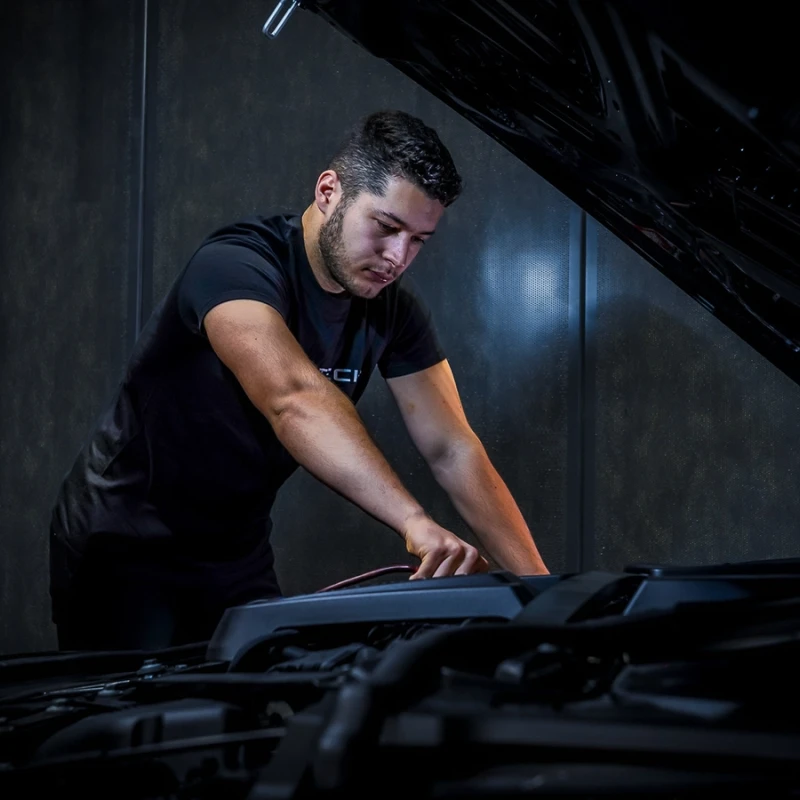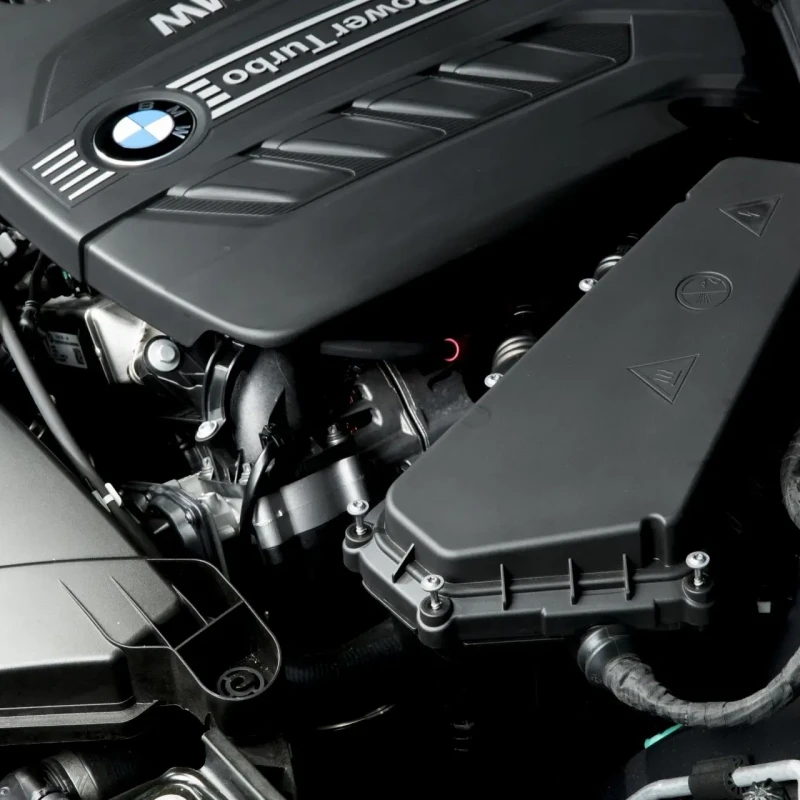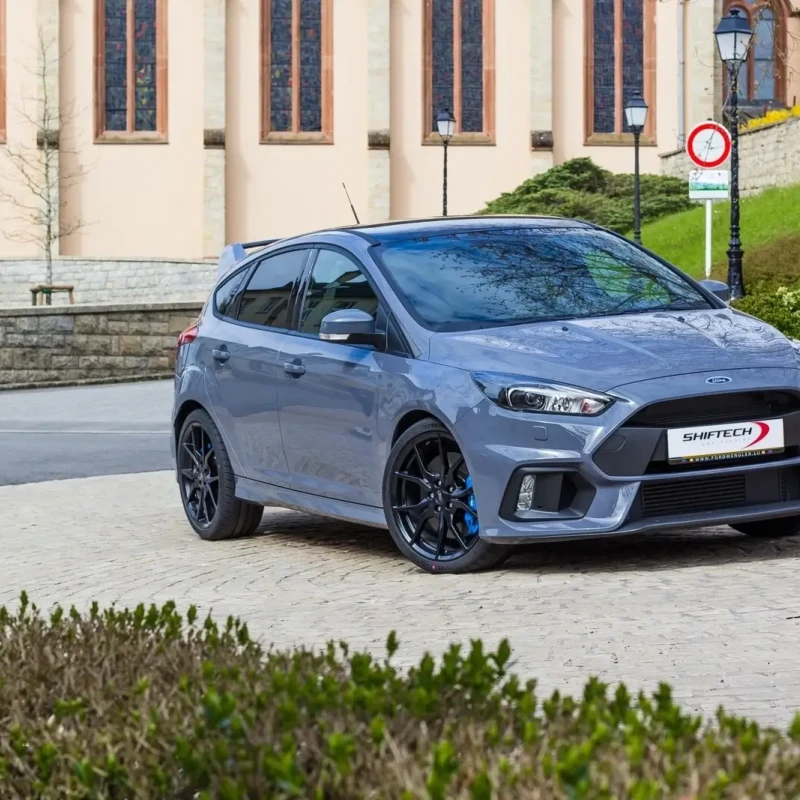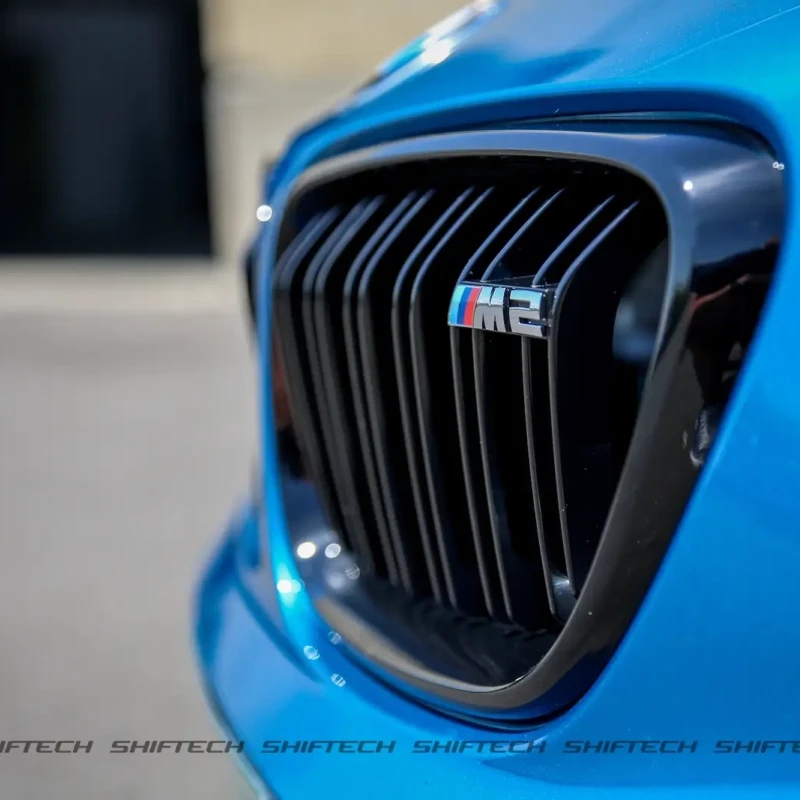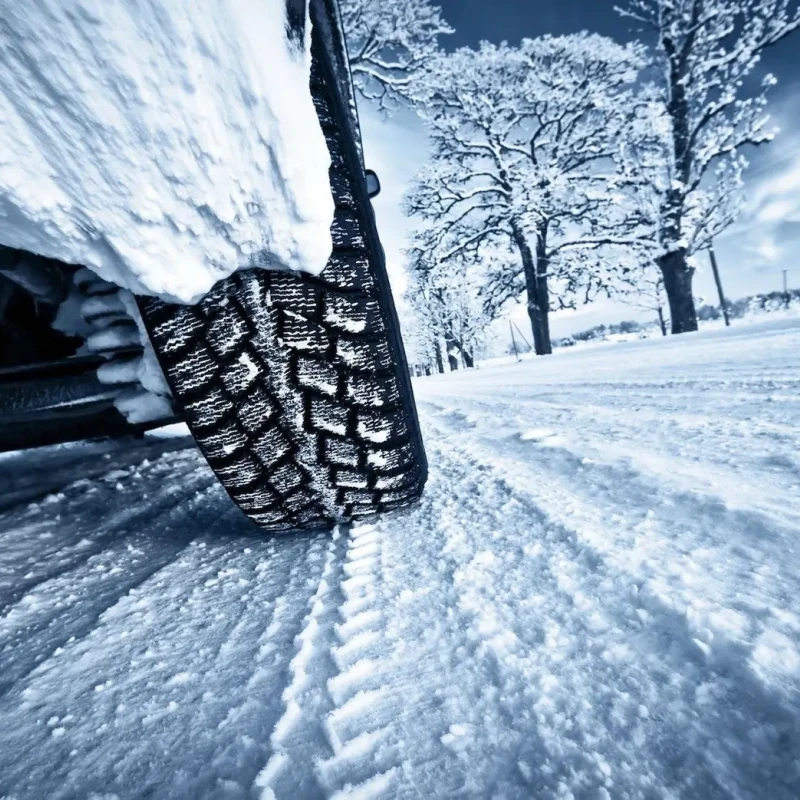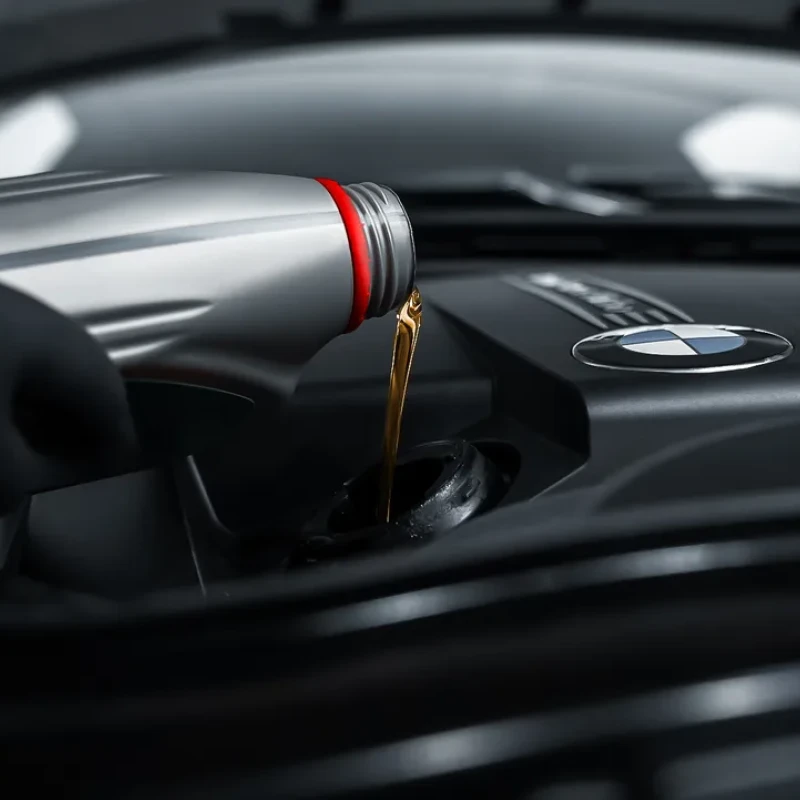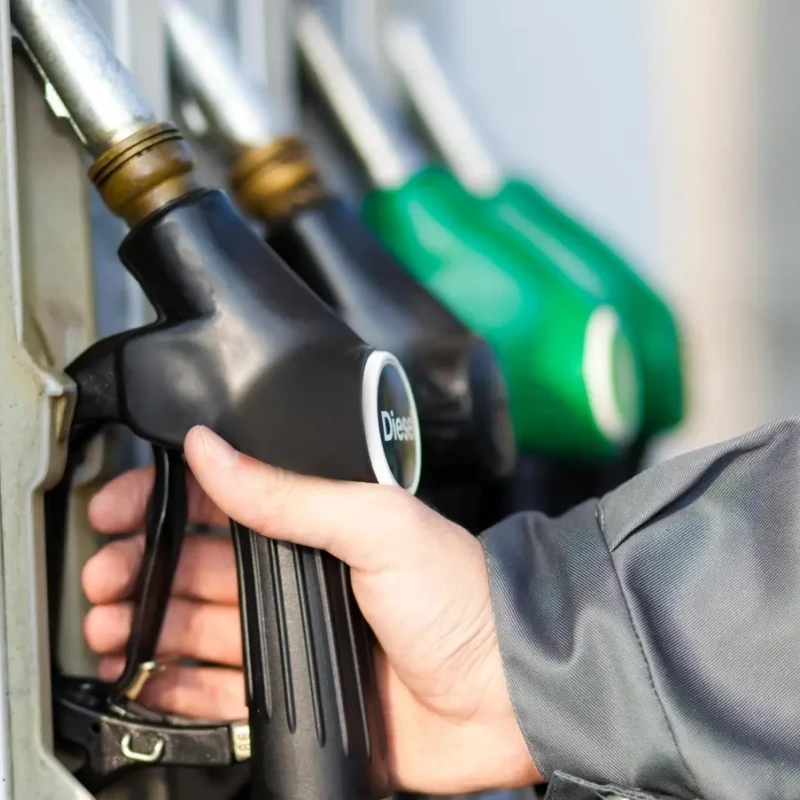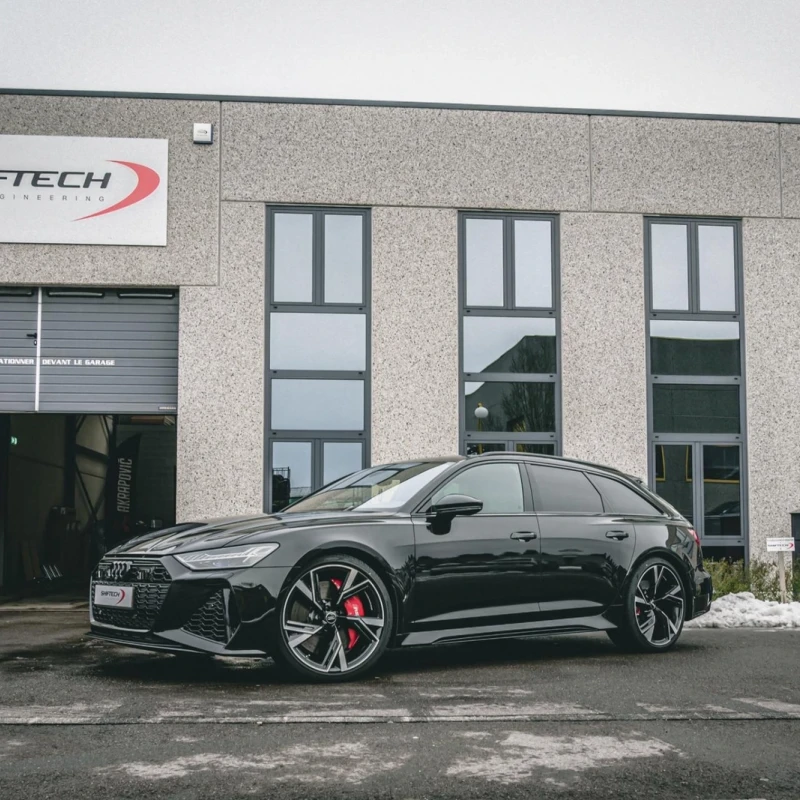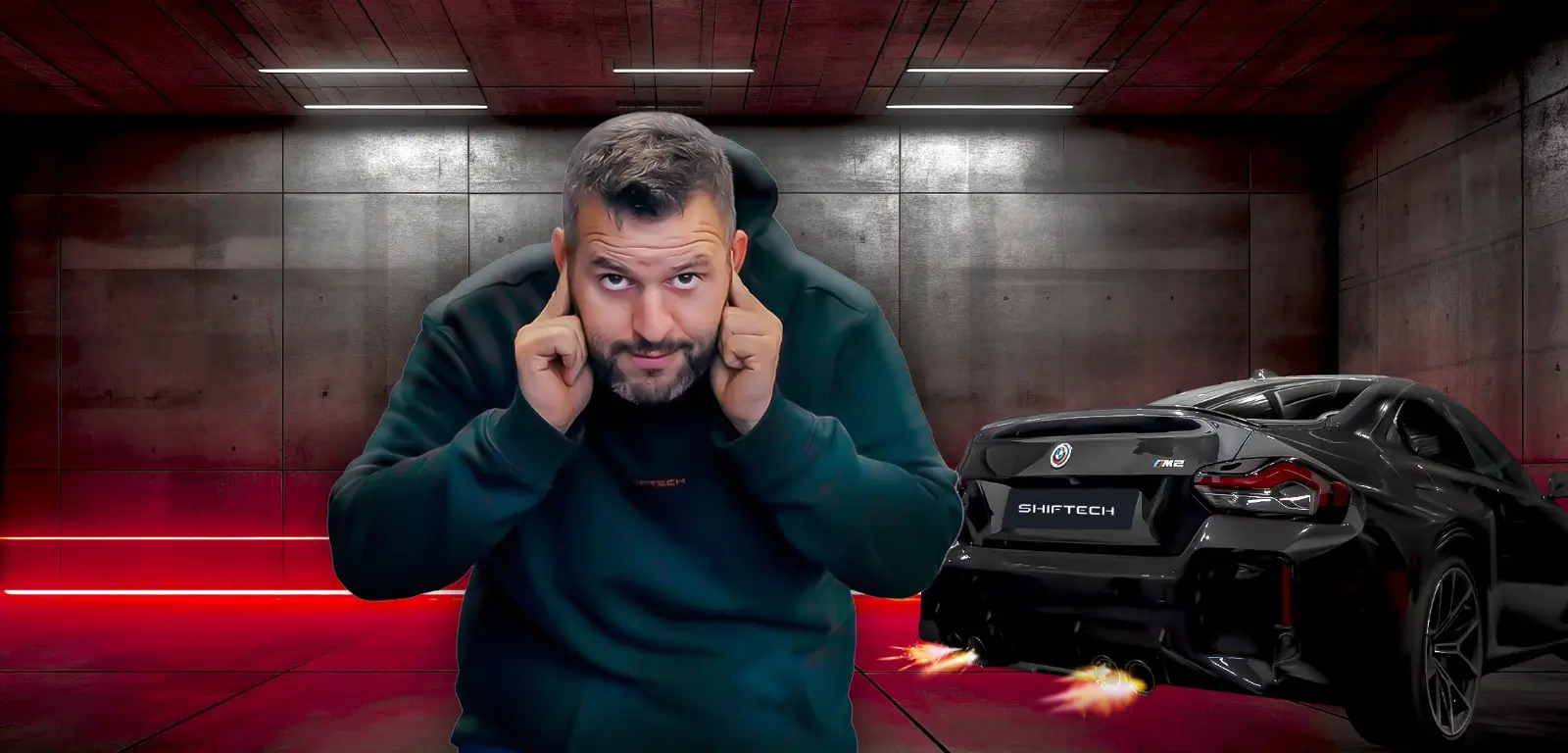
Pop and bang or crackle map?
There's a new trend on the internet and in forums to make your car sportier by using certain software modifications. These modifications are known as crackle map, pop and bang or ALS (to name but a few), and in the end they allow you to get a backfire from the exhaust when you release the accelerator pedal.
Many people have contacted us to find out whether we can offer this type of solution on their vehicle, without knowing the consequences of such an intervention.
That's why we thought an article on this subject would help to better understand the origin of these exhaust backfires and the mechanical consequences that result.
Crackle map / Pop and bang / pop off
What does it mean? The pop and bang or the crackle map (two names that mean exactly the same thing) are English terms that express the little backfires that you can hear when the gas is released.
A video is worth a thousand words:
To achieve this, you need to make a few anti-mechanical modifications. the trick is to cause a significant delay in ignition at low load and over a defined rev range, while continuing to inject petrol.
Remember: for good combustion, you need air and petrol.
To obtain fuel injection with the throttle pedal released, the throttle must be left slightly open (2% is enough).this is because the logic of engine management prevents petrol from being injected when the throttle is closed (there would be no incoming air).
With a delay in ignition, combustion takes place later - too late. as a general rule, for optimum efficiency, combustion should take place at top dead centre (when the piston reaches the very top). with a delayed ignition, the spark - which triggers combustion - occurs when the piston has already descended into the cylinder. this is not at all ideal from an efficiency point of view, but given the low load (deceleration/gear change), it would only have an impact on engine braking, which would be less pronounced.
Combustion therefore comes late and ends in the exhaust phase. the exhaust valves will therefore open while combustion is not yet complete. The mixture, which is not yet burnt, will explode between the valves and the exhaust because of its very high temperature, causing the pop & bang sound.
A quick reminder of the phases of a 4-stroke engine to locate the exhaust phase:
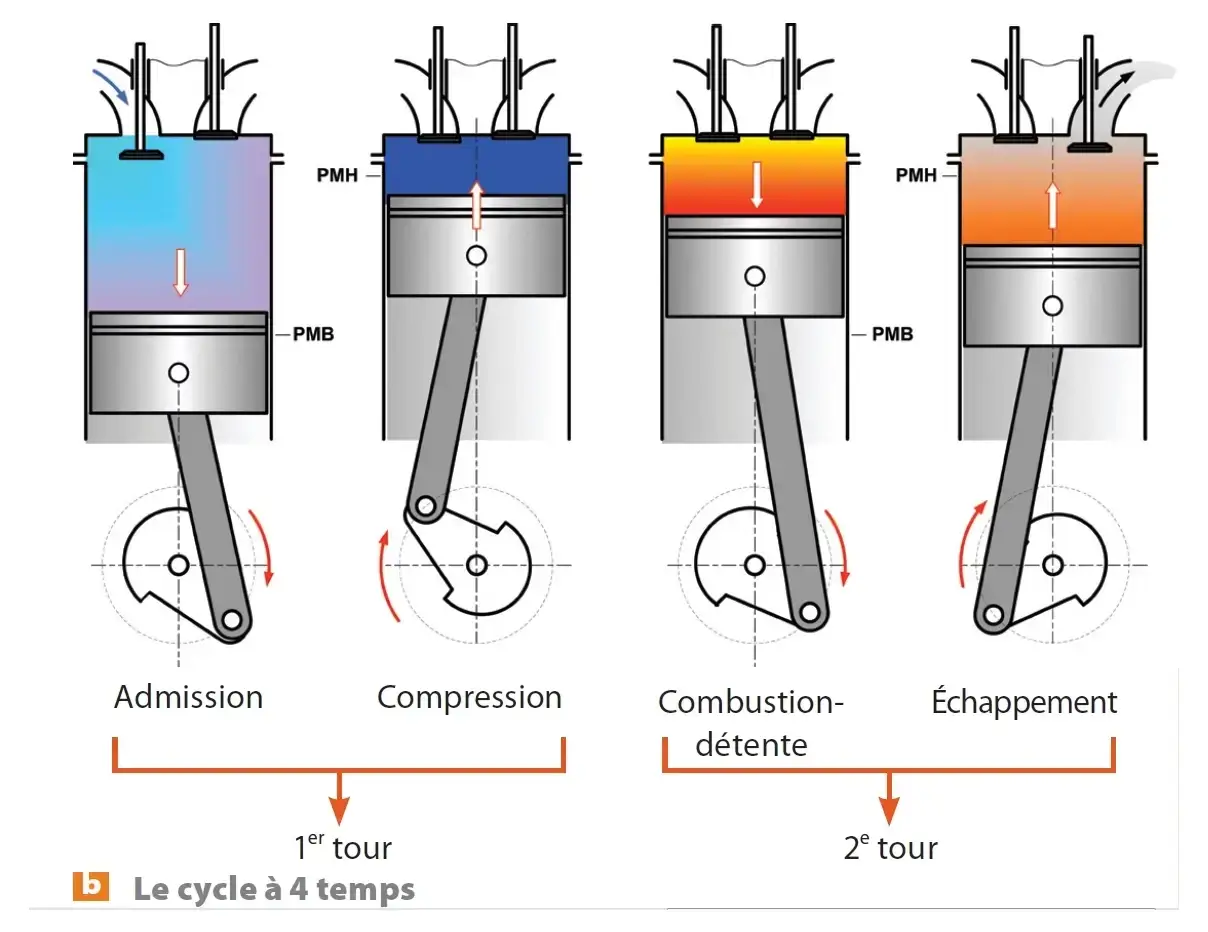
While this air-fuel mixture makes a nice, sporty noise, it can nevertheless be devastating for your engine. it's an explosion at over 1000°C that can cause serious damage to your valves, your piston heads and even the turbine of your turbo on the exhaust side.
This is why this type of modification is clearly forbidden on any vehicle that still has a catalytic converter, and is clearly not recommended in other cases. engines and other components are not designed to withstand such high temperatures.
Why do some manufacturers offer a similar system as original equipment?
After reading this article, we are entitled to ask why this technique is so little recommended when some manufacturers, such as BMW, offer the crackle map as standard on their sports cars (e.g. M35i)?
The reason is as follows. on the BMWs concerned, it is really a crackle map: a map developed and dedicated for this purpose in the engine mapping.in particular, this map enables you to activate or deactivate exhaust backfire depending on the temperature at the turbo outlet. what's more, the backfire is not excessive, as it is the result of a clean, controlled ignition. naturally, when this function is provided by the manufacturer, it is risk-free.
What about the bang-bang (ALS)?
The bang-bang (or ALS - Anti-Lag system) is used in rallying, especially on Japanese vehicles (Mitsubishi Lancer, Subaru Imprezza etc.) to reduce turbo lag.when you release the throttle or change gear, the throttle closes and all the air in the supercharger circuit is extracted via a dump valve, so the turbo has to recharge and this takes a certain amount of time, known as lag (response time).
To limit this lag, engineers have had the good idea of leaving the throttle open (at around 25% in this case) so as to obtain more air and fuel during the ignition delay. This will have the effect of spooling (starting/turning) the turbo sooner.
In short, the only difference between a pop & bang and a bang bang is the opening of the throttle and the resulting quantity of air and injection.with the 2% throttle opening of the pop & bang, the detonations are minimal, just enough to make some backfires at the exhaust.with the bang-bang, the consequent delay in ignition associated with higher pressure gives rise to 'gunshots' in the exhaust and temperatures that can reach almost 1200°c.on conventional vehicles, the turbo and valves are not designed to withstand such high temperatures, and this often leads to serious breakdowns.
Conclusion
Let's face it, the principle of pop and bang and/or bang bang is anti-mechanical. depending on the amount of ignition delay applied and the throttle opening, it will limit turbo lag and produce a nice noise, but at what price? Many people have tried this technique and have lost their feathers.
It's more of a joke to claim that the pop & bang is derived from the technology used in rallying to prevent lag. in fact, the opening of the throttle is too small to make any noticeable difference in terms of reducing lag. if the aim is really to limit turbo lag, a change of dump valve spring might be more appropriate.
If there's just one thing you need to remember from this article, which is a little more technical than the others, it's that pop & bang does nothing to benefit your engine. if the engine and its management are not designed for it, it is not advisable to apply it when chiptuning the engine, for the reasons given above. if you do decide to take the plunge, remember that the loudness of the pop and bang or anti-lag sound is proportional to the ignition delay applied. so the more intense the backfire, the greater the risk of breakage.
ShifTech's position on pop and bang will be to dissuade the customer from making this modification. if the customer really wants this feature, a waiver will have to be signed because, as we mentioned in the article, the pop and bang has a negative effect on the longevity of the engine and its components. from a technical point of view, we will not exceed a negative ignition of 10° in order to limit the increase in exhaust temperature. this will result in an audible pop and bang, but far from the 'gunshot' videos that can be found on YouTube.
Learn more
View articles
Similar
